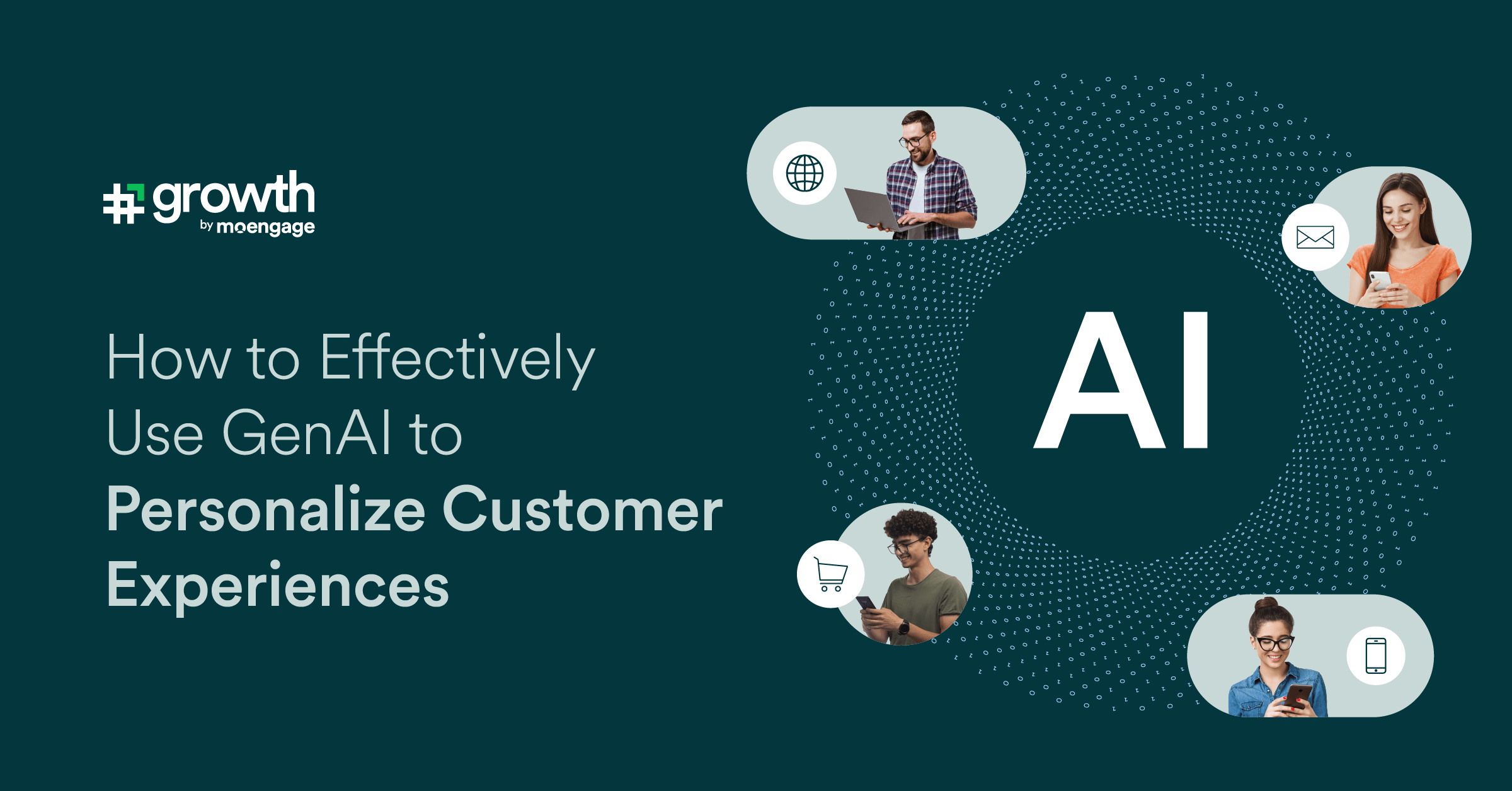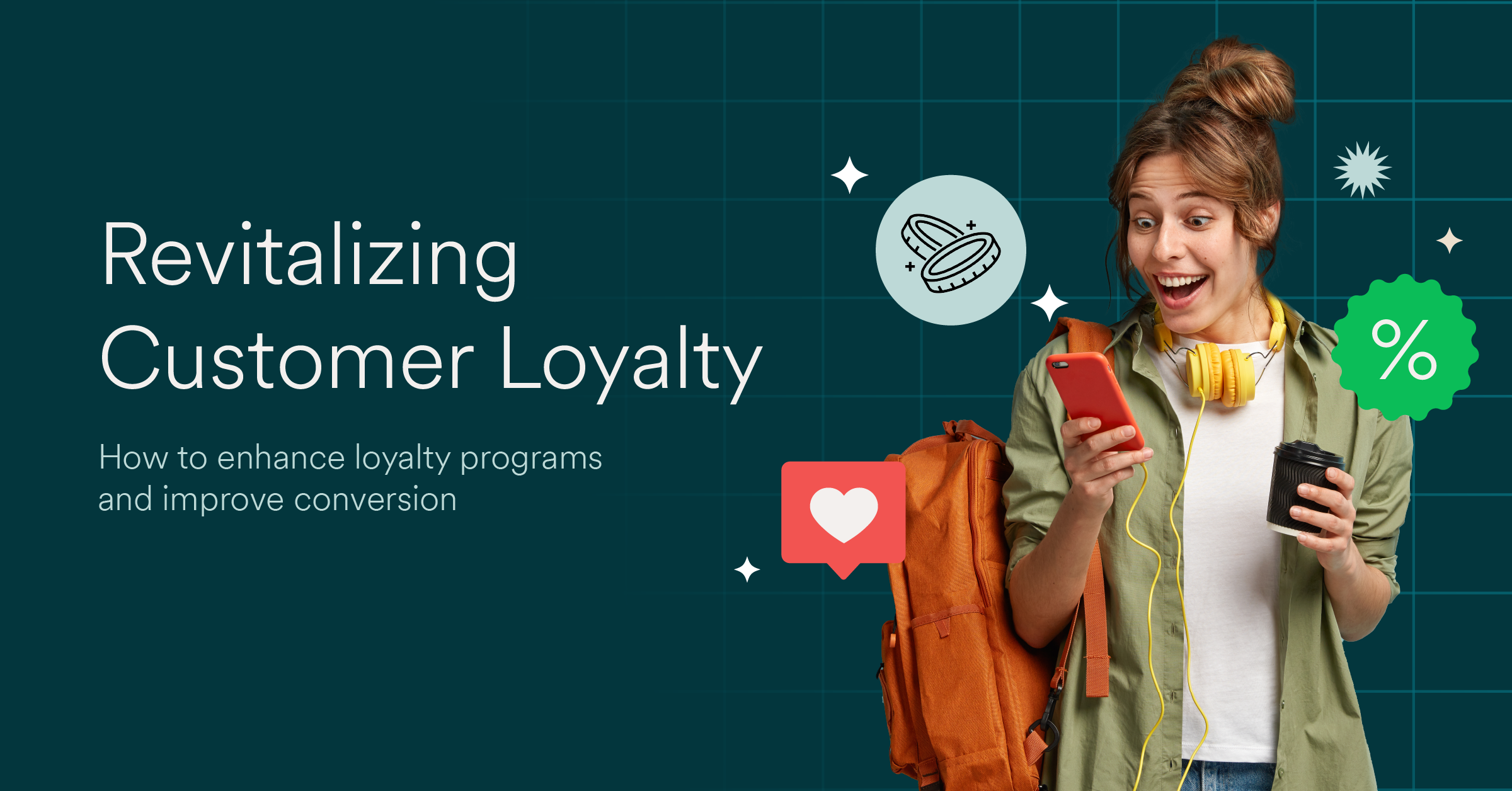5 Trends in Customer Engagement Platforms: What the Future Looks Like
Customer engagement is one of the key drivers of conversion and retention. It sets the foundation for brand trust and loyalty. With cut-throat competition around, it can actually set brands apart without the need for excessive burn and acquisition costs. An increasing number of brands are therefore striving to engage better with customers. To stay ahead of the curve, they are making the most of the troves of data available to them to create and deliver delightful and highly personalized experiences. For this, they can leverage evolving tools and technologies such as a Customer Engagement Platform or CEP.

A survey reported that 97% of consumers and 98% of contact center managers believe customer service interactions influence whether consumers will be loyal to a brand. Moreover, when given a positive customer experience, 72% of customers share their experience with six or more people.

These numbers make it clear that customer engagement is one of the key drivers of conversion and retention. It sets the foundation for brand trust and loyalty. With cut-throat competition around, it can actually set brands apart without the need for excessive burn and acquisition costs.
An increasing number of brands are therefore striving to engage better with customers. To stay ahead of the curve, they are making the most of the troves of data available to them to create and deliver delightful and highly personalized experiences. For this, they can leverage evolving tools and technologies such as a Customer Engagement Platform or CEP.
What is a Customer Engagement Platform?
A customer engagement platform or CEP, is a suite of tools and technologies used for tracking and analyzing customer behavior and interacting with them at various touchpoints. CEPs help enhance the customer journey by allowing brands to offer contextual and personalized experiences.
A CEP can help brands engage better with customers across the consumer lifecycle and touchpoints. Here’s how an optimal engagement cycle may look like:

The Future of CEPs and Impact of Technology
Traditional CEPs are more of customer relationship management (CRM) tools that monitor and manage every customer interaction. However, they are primarily focused on collecting data. Today CEPs can no longer just gather data but they also need to analyse and deepen their understanding of it to engage customers across the journey.
CEPs must fulfil the functions of a unified communication hub, advanced CRM, and a real-time customer journey optimizer.
CEPs must allow for advanced personalization, omnichannel approach, AI-enriched automation, efficient support, seamless integrations, rich analytics, and nurturing communities. Most importantly, CEPs should be able to cater to brands at scale by incorporating technologies like AI, machine learning, Web3, and more.

Customer Engagement Platforms: Trends in 2024
1. Growing Role of AI in Crafting Customized Experiences in CEPs
As Artificial Intelligence (AI) touches upon every part of our lives, it is also opening up new frontiers for customer engagement too. Companies are, therefore taking to AI to deliver personalized customer experiences by anticipating needs. For AI-driven organizations, AI-enabled functions result in increased cross-sell and upsell opportunities while reducing costs.
Intelligent CEPs are leveraging everything—right from video processing to machine learning—to lower costs while offering integrated, improved, and complete customer experiences.
This includes data-driven approach to customer interactions, using AI to simplify customer choices, routing customers to the best choice or channel, completely automating experiences like customer service via chat bots, and so on. CEPs are also using AI to better equip their customer service teams to engage faster and with better quality. For instance, by using generative AI, customer-facing employees are able to write more relevant emails and quicker responses.
AI is also enabling brands to apply images, audio, videos, and location, to help them deliver more human and hyper-personalized interactions and offers.
AI is taking customer engagement up a notch by allowing brands to anticipate customer needs via predictive analytics.
2. Importance of Personalization and the Role in CEPs in the Future
If there is one thing that takes the cake in marketing in 2023, it is personalization. Relationships are key to customer engagement. What better way to tell customers that their relationship is valued than by tailoring experiences suited to their needs?

A survey reported that 80% of consumers spend more when interactions are tailored to their interests, which directly contributes to a brand’s top line.
It can be challenging for businesses to keep pace with customer expectations and requests at multiple channels and touchpoints. To deliver such personalized experiences, brands need a CEP that offers complete customer context, such as account type, support history, order preferences, past purchases, and more. CEPs of the future will put customer experience at the heart of the journey.
Tomorrow’s CEPs will offer personalized resolutions to customer problems on their preferred channels without the fragmented experience. Whether offering chat support to customers on social media or helping a webpage / website visitor who may be a prospect, CEPs can step in at every touchpoint with smart, thoughtful recommendations.
3. Use of Augmented & Virtual Reality to Create More Immersive Customer Experiences
Augmented reality (AR) and virtual reality (VR) are already making splashes in various arenas like gaming. Now they’ve made their way into customer experience, too.
For instance, IKEA has IKEA Place, an app enabling customers to virtually place furniture inside their homes. This app scales products in real-world settings with 98% accuracy.

VR with its capabilities of integrating digital elements like images, videos, and information in real environments, can result in immersive experiences for users. AR enables customers to better interact with products and information via interactive product visualizers, informative overlays on museum exhibits, and virtual try-on experiences for clothing.
BMW is leveraging AR to offer customers the opportunity to experience and explore BMW’s i3 or i8 through a mobile app. The app aimed to create a real-life experience for customers with interactive visualizations of the cars.
Similarly, in the beauty industry, Sephora’s Virtual Artist and L’Oreal are using AR to allow customers to try on makeup in a virtual fashion.
AR and VR can thus enhance the realism of brand experiences, and allow interactive product visualization, gamified engagement, improved sales collateral, storytelling and brand engagement. In fact, these technologies serve as differentiators for brands in creating exceptional customer experiences.
4. Rise of Interactive Chatbots
In a world that is 24×7/365 days online, who’s engaging with your customers and offering them requisite support? Well, brands are certainly not depending on employees to be available all the time. This is where chatbots have stepped in.
AI chatbots may not have replaced humans entirely, but are instrumental in providing meaningful customer interactions, often becoming the first touch point in some cases. Chatbots help reduce wait times, create tailored and prompt responses, provide continuous learning, and direct customers to the right place with very little wait.
Add to this Generative AI and the world of chat bots drastically transforms. With the entry of language learning models like ChatGPT, scripted conversations are now sounding more and more like unscripted, casual human conversations. Natural language processing and machine learning are leading to a paradigm shift in the way bots interact with customers.
Be it Amazon Alexa, Microsoft Cortona, or Apple’s Siri, more engaging and personalized conversations with proper context, intent, and language nuances areon the way. Going ahead, we will see more data-driven, multilingual, and emotionally intelligent chat bots.
5. Importance of Real-time Data Analytics in CEPs for Effective Decision-making
If data is the new oil, analytics is the power engine. “Listening” to customers is perhaps the first step in bettering engagement. Real-time analytics with cutting-edge CEPs can ensure prompt actions by the brand and acquire, convert, and retain that customer at a lower cost.
CEPs are offering a 360-degree, unified view of customers across multiple channels, locations, devices, geographies, and time zones. These platforms are then disseminating actionable insights across marketing, sales, customer services and contact centers, operations, product teams, tech, and PR.

Real-time analytics can thus translate to tailored and, most importantly, timely offers, recommendations, and interactions. It also minimizes scattering loss, that is, making offers and recommendations to an audience that is not your target group.
Further, predictive models integrated in modern CEPs can identify buying patterns, purchase history and quickly optimize strategies to upsell and cross-sell.
Challenges in implementing and optimizing CEPs
While futuristic CEPs offer a wide scope for brands to enhance every part of the journey, there are some challenges and considerations to note in their implementation.
Lack of Resources:
Brands may lack the necessary resources to implement a modern CEP, such as skilled professionals and the appropriate budget.
Lack of strategy:
The lack of a solid plan to enable proactive and intelligent customer engagement may be missing. In this case, implementing a CEP comes in much later after the brand has figured out the initial nuances.
Data privacy and security:
CEPs require access to customer data. In this scenario, brands will need to be acquainted with data security laws relevant to the region as well as consent-driven access to personal data.
Growth mindset:
Implementing CEP requires teams to come together and collaborate. It also means shifting from legacy systems. It all starts with a change in mindset. Brands will need to cultivate a culture of learning and innovation for implementing a futuristic CEP.
What’s next for brands?
Whether it is predicting customer behaviour with state-of-the-art AI or blending the virtual world with reality, brands are surely not falling short of possibilities. Marketers are fast catching on to hyper-personalization, zero- or first-party data collection, and other trends shaping the future of customer engagement.
TL;DR? Here’s what you need to know:
- Customer engagement is among the top priorities for brands as it directly impacts retention, conversion, churn, and top-line.
- As customer needs and technologies evolve, modern CEPs have unified communication, advanced CRM, and real-time engagement capabilities.
- The rise of AI, hyper-personalization, AR and VR, intelligent chat bots, and real-time data analytics are governing CEPs of the future.
- Brands considering the adoption of state-of-the-art CEPs need to take consideration of aspects such as costs, skills, resources, and data privacy.
- As martech innovations explode in the coming years, brands must leverage them to stay ahead of the curve, if they align with their strategy.



